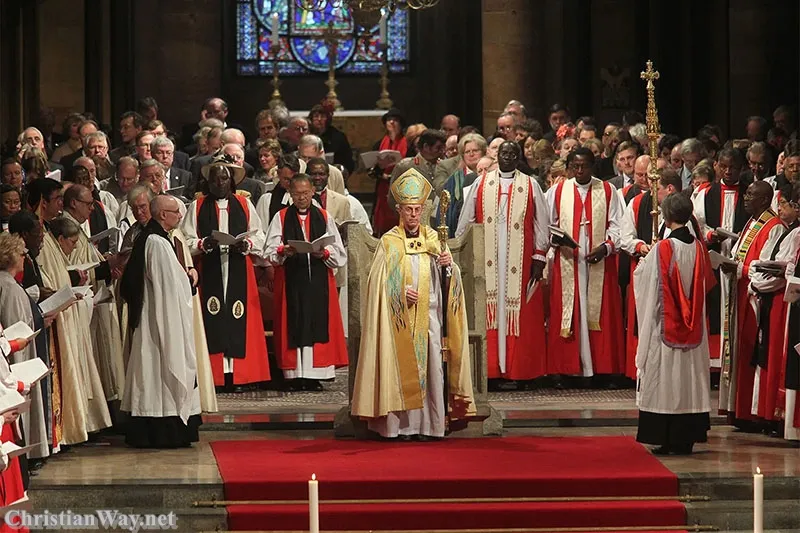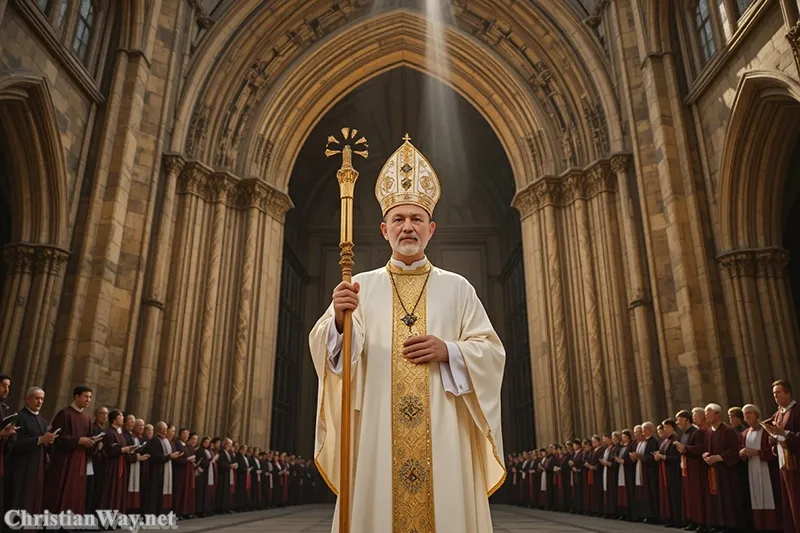Dear friends in Christ,
In every age, God calls His people to unity — not merely in structure, but in spirit, faith, and love. Among the great Christian traditions that have grown from this divine call stands the Anglican Communion, a worldwide fellowship of churches that share a common heritage of faith, worship, and order. It is not a single centralized church, but a family of autonomous yet interdependent churches, bound together by their relationship to the historic See of Canterbury and by their shared commitment to the Gospel of Jesus Christ.
For millions of Anglicans across continents and cultures, this communion represents both diversity and unity — a tapestry woven from many languages, histories, and spiritual expressions, yet anchored in the same faith confessed by the apostles. To reflect on the Anglican Communion, then, is to glimpse a vision of the Church that lives in the tension between freedom and faithfulness, local expression and global identity, tradition and renewal.
The Origins of the Anglican Communion
The Anglican Communion traces its spiritual ancestry to the Church of England, which emerged during the 16th century Reformation. Yet its roots reach much deeper — into the ancient Christian faith that first took hold in the British Isles through Roman missionaries and Celtic saints.
When the English Reformation took shape under King Henry VIII and later under Elizabeth I, the Church of England sought to preserve continuity with the Catholic heritage while embracing reforms in doctrine and practice that emphasized the primacy of Scripture, the use of the vernacular in worship, and the priesthood of all believers.

As the British Empire expanded in the centuries that followed, English settlers, missionaries, and clergy carried their faith to distant lands — to Africa, Asia, the Americas, and Oceania. Yet what began as a transplanted church soon took root in diverse soils. Each region began to develop its own local expression of Anglicanism, leading in time to the formation of self-governing churches that remained in communion with the Church of England and, through it, with one another.
By the 19th century, this growing fellowship needed a means of maintaining unity amid diversity. Thus was born the Anglican Communion — not through decree, but through mutual recognition and shared faith in the Lord Jesus Christ.
What “Communion” Means in the Anglican Tradition
The term communion in Christian theology signifies more than simple association. It expresses a spiritual fellowship, a sharing in the very life of Christ and in the unity of His Body, the Church.
In the Anglican sense, communion is maintained not through legal or hierarchical control, but through mutual bonds of affection, faith, and shared heritage. Each church, or “province,” in the Anglican Communion is autonomous — governing its own affairs, electing its own bishops, and shaping its own liturgical life — yet all are united by:
- A common faith grounded in Scripture and the Creeds.
- A shared worship expressed through variations of the Book of Common Prayer.
- A historic episcopate, meaning the unbroken line of bishops that connects each province to the apostolic tradition.
- A relationship of communion with the Archbishop of Canterbury, who serves as the spiritual focus of unity, though not as a pope or supreme authority.
This model of communion reflects the Anglican desire to be both catholic and reformed — holding together the ancient faith of the undivided Church with the insights and freedoms born of the Reformation.
The Instruments of Unity
The Anglican Communion maintains its coherence through several key bodies often called the “Instruments of Communion”:
The Archbishop of Canterbury
As primus inter pares — “first among equals” — among Anglican bishops, the Archbishop of Canterbury holds a unique role of moral and spiritual leadership. His See, based at Canterbury Cathedral in England, has been a center of Christian life since the time of St. Augustine of Canterbury in the 6th century.
The Lambeth Conference
First convened in 1867, this gathering of Anglican bishops from around the world meets roughly every ten years. The conference provides a forum for prayer, reflection, and consultation, addressing theological, moral, and social issues confronting the Church. Its resolutions carry moral rather than legal authority but often shape the direction of Anglican life.
The Anglican Consultative Council (ACC)
Composed of bishops, clergy, and lay representatives, the ACC fosters cooperation in mission, ecumenical dialogue, and social justice efforts across the Communion.
The Primates’ Meeting
Gathering the senior archbishops or presiding bishops of each province, this meeting provides an opportunity for mutual counsel and discernment, especially in times of tension or crisis.
Together, these instruments embody a form of governance rooted not in coercion but in consensus, prayer, and shared responsibility. They mirror the very nature of the Body of Christ — many members, yet one Spirit.
The Global Shape of the Anglican Communion
Today, the Anglican Communion includes over 80 million members in more than 165 countries, organized into around 42 autonomous provinces. These range from the Church of England and the Episcopal Church (USA) to the Church of Nigeria, Church of Uganda, Anglican Church of Australia, and many others.
Each province bears the marks of its local history and culture. In Africa, Anglicanism often thrives as a vibrant, missionary movement, deeply connected to Scripture and community life. In North America and Europe, it continues to wrestle with modern challenges such as secularization, cultural pluralism, and debates over theology and ethics. In Asia and Oceania, it grows through quiet witness, education, and service.
Despite these differences, all share a common heritage of worship and doctrine. The Book of Common Prayer, in its many national editions, remains the heart of Anglican liturgy — a treasury of Scripture, psalms, and prayers that express both reverence and simplicity. Its rhythms have shaped the spiritual lives of generations, teaching believers to pray with beauty and order, “as it was in the beginning, is now, and ever shall be.”
Theological Identity: Catholic, Reformed, and Evangelical
Anglicanism has often been described as a “via media” — a middle way between Roman Catholicism and Protestantism. Yet this phrase, properly understood, does not imply compromise or indecision. Rather, it reflects a commitment to balance: reason with revelation, tradition with reform, authority with freedom.
In its theology, Anglicanism holds:
- Scripture as the ultimate rule of faith, interpreted within the tradition of the Church and illumined by reason.
- The Creeds — Apostles’ and Nicene — as essential summaries of Christian belief.
- The Sacraments — especially Baptism and the Eucharist — as means of grace instituted by Christ.
- The historic episcopate as a sign of unity and continuity.
Within this framework, Anglicanism accommodates a rich diversity of expression: evangelical, emphasizing conversion and biblical preaching; catholic, cherishing liturgy, sacraments, and apostolic continuity; and broad church, valuing inclusivity and reflection.
This diversity, though sometimes a source of tension, is also the Communion’s great gift — a witness that unity need not mean uniformity, and that truth can be expressed through many voices in harmony with the same Spirit.
Challenges and Tensions in Communion
Like all great families, the Anglican Communion has faced strains in maintaining unity across its vast diversity. Debates over issues such as human sexuality, the ordination of women, and biblical interpretation have tested its bonds of affection.
Some provinces have found themselves in disagreement over doctrine or discipline, leading to temporary ruptures or the formation of alternative Anglican bodies. Yet through all such trials, the Communion continues to seek reconciliation, guided by prayer, dialogue, and the desire to remain faithful to the Gospel.
In these struggles, one may discern the deeper reality that Christian unity is not an achievement but a gift — one that must be received anew in every generation. As St. Paul wrote, “Make every effort to keep the unity of the Spirit through the bond of peace” (Ephesians 4:3).
The Anglican Communion’s patient endurance amid difference can serve as a living parable for the wider Church — a reminder that love is greater than agreement, and that fidelity to Christ must always transcend human divisions.
The Anglican Vision of Mission
From the beginning, Anglicanism has understood itself as a missionary Church. The same Spirit that sent the apostles into the world impels Anglicans today to bear witness to Christ through word, worship, and service.
Across continents, Anglican communities are engaged in:
- Education and healthcare, founding schools and hospitals in underserved regions.
- Social justice, advocating for the poor, refugees, and the marginalized.
- Ecumenical and interfaith dialogue, seeking peace among peoples and understanding among religions.
- Environmental stewardship, affirming the sacredness of creation.
This missionary vision reflects the Anglican conviction that faith must always be incarnate — lived out in love, justice, and care for the neighbor. As the Book of Common Prayer teaches: “Almighty and eternal God, so draw our hearts to you… that we may do those things which are pleasing in your sight.”
The Anglican Communion and Ecumenism
The Anglican Communion has long played a vital role in the ecumenical movement, fostering dialogue with the Roman Catholic, Orthodox, Lutheran, Methodist, and Reformed churches.
Notably, the Anglican–Roman Catholic International Commission (ARCIC) has produced significant theological statements on authority, Eucharist, and ministry, demonstrating the shared faith that unites more than divides.
Such efforts express the Anglican belief that the Church’s unity must mirror the unity of the Triune God — a communion of persons bound together by love. The Anglican witness thus becomes a bridge: between ancient and modern, East and West, faith and reason.
Living Communion in the Modern World
In our rapidly changing world, the Anglican Communion faces new challenges — secularization, cultural fragmentation, and moral confusion. Yet in every place, Anglicans continue to gather at the altar, to read the Word, to pray the Psalms, and to receive the Body and Blood of Christ.
That simple, faithful act — repeated in cathedrals and village chapels, in cities and jungles, in English and Swahili, in peace and persecution — is what holds the Communion together. It is the same Christ who feeds them all, the same Spirit who binds them, the same Father who loves them into unity.
Reflect and Pray
The Anglican Communion is not perfect, nor is it meant to be. It is a living, breathing fellowship of believers walking together in the light of Christ — sometimes faltering, often diverse, yet always seeking to remain faithful to the One who prayed, “that they may all be one” (John 17:21).
As we contemplate this communion, may we too renew our commitment to unity in love and truth. For whether Anglican, Catholic, Orthodox, or Protestant, we belong to one Body and share one hope in Christ.
Let us pray:
Almighty God, Father of all nations, bless your Church in every land.
Grant that all who confess your holy Name may be united in your truth, live together in your love, and reveal your glory in the world.
Through Jesus Christ our Lord. Amen.
— Fr. John Matthew, for Christian Way





